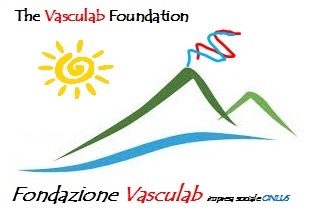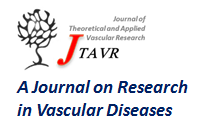DOI: 10.24019/issn.2532-0831
Online ISSN 2532-0831

Journal of Theoretical and Applied Vascular Research
Journal website: http://www.vasculab.eu/jtavr.xml
JTAVR 2020;5(2): EPub Ahead of Print

The Guytonian Equation: Established Physiological Law?

GL Brengelmann1
accepted Mar 1, 2021
EPub ahead of Print: Mar 15, 2021
Abstract
The present collection of papers is meant to focus on old and new concepts about venous return. This essay argues that one widely held old concept is wrong. The misconception would be perpetuated by those who speak of “repurposing the systemic venous return model”. The model in question describes systemic venous return as driven through a “resistance to venous return” in proportion to the difference between mean systemic pressure and right atrial pressure.
It arose from experiments in which right atrial pressure (Pra) was recorded while flow was forced through the peripheral vasculature by a pump, with data points taken after pressures equilibrated to each new level of flow. The steady-state flow (F) set by the pump could be taken interchangeably as cardiac output (CO) or venous return (VR). Pra at the zero-flow level settled at what is defined as “mean systemic pressure” (Pms), understood as the pressure at which all the elastic segments of the peripheral vasculature equilibrate in the absence of pressure differences associated with flow. Total circulating volume was kept constant, independent of flow level. The data were approximated by the equation Pra = Pms – F*RVR, alternatively written as F = (Pms – Pra)/RVR. From the point of view of the first formulation, we see Pra falling in proportion to F, starting from Pms at zero flow, a concise statement of the actual experimental procedure and findings. The second formulation has been seen from a different perspective; that F is proportional to the net driving pressure, i.e., (Pms – Pra), in which Pra is seen as a back pressure opposing venous return. From this point of view, adopted by a leading researcher of his time, A.C. Guyton, comes the idea that, to increase VR, the heart must somehow reduce Pra.
Re-examining the model that Guyton and his coworkers developed reveals that the appearance of Pms in their equation does not identify this variable as a pressure that exists physically at the upstream end of the pathway for venous return. At best, the model offers a way of looking at the factors that determine the equilibrium between the Pra that results in the peripheral vasculature at a particular steady-state level of flow that is consistent with the influence of Pra on the output of the heart. It has nothing to offer for the advancement of understanding of the pathophysiology of real, dynamic flow within vascular segments.
since Mar 15, 2021
 - DOI: 10.24019/jtavr.98 - Corresponding author: Prof. George L Brengelmann, EMail brengelm@uw.edu
- DOI: 10.24019/jtavr.98 - Corresponding author: Prof. George L Brengelmann, EMail brengelm@uw.eduCitation style: Brengelmann GL. The Guytonian Equation: Established Physiological Law?. JTAVR 2020;5(2): EPub Ahead of Print . https://doi.org/10.24019/jtavr.98
 © 2020 Fondazione Vasculab impresa sociale ONLUS. All rights reserved.
© 2020 Fondazione Vasculab impresa sociale ONLUS. All rights reserved.